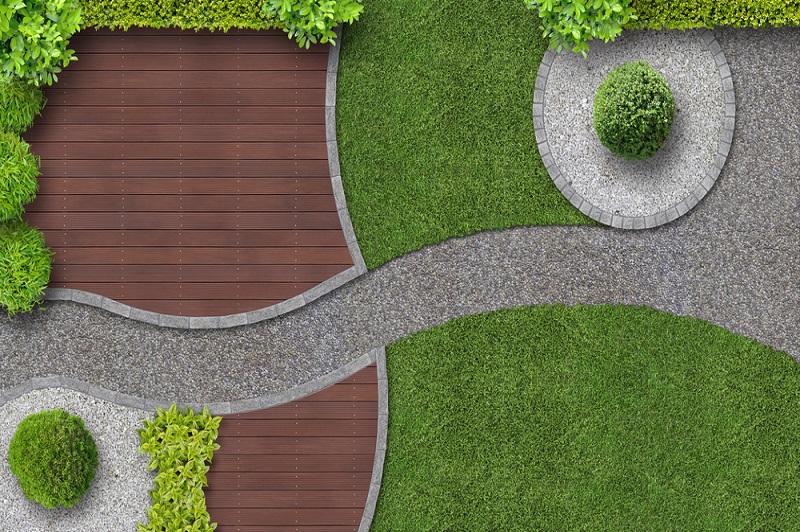The Basic Principles Of Landscapers
The Basic Principles Of Landscapers
Blog Article
Indicators on Landscapers You Need To Know
Table of Contents8 Easy Facts About Landscapers ShownThe 45-Second Trick For LandscapersEverything about LandscapersLittle Known Facts About Landscapers.Some Known Factual Statements About Landscapers The Best Strategy To Use For Landscapers
- A yard attribute where water is stood for by an accumulated stone product, typically a gravel or granite.- A rock or natural flagstone patio area, course, or pathway developed without a concrete base.- A stone preserving or totally free standing wall built without using mortar. A very competent mason is required for a dry pile stone wall. Most wall surfaces in Rose city are moist stacked, also if they seem. - An underground framework that collect water and allows it to reduce percolate into the soil around it.
Landscape design that works with a websites' environment in both appearance and sustainability without unfavorable impacts to the setting. Interrupting the landscape is a line of demarcation that produces visual passion in the yard by dividing one section from one more segment. This can be visual or useful, keeping one element (such as pea crushed rock) from obtaining blended into another (like bark dirt).
Areas can additionally have a feeling of "room" offered by trees, other growings, fences, or screens. The landscape near the access to a structure.
The Main Principles Of Landscapers

The element in a landscape design or area in a landscape that is meant to be most noticeable. The focal factor can be a plant, boulder, statuary, gathering area, or various other landscape feature.

The Of Landscapers
Rock product, either rounded or fractured, that is reasonably small- generally 1" or less. Low plants that are allowed or motivated to top a location. Can refer to any kind of "hard" garden elements consisting of statuary or stones but a lot of typically is made use of to describe courses, outdoor patios, and walls.: Elevation distinction between the level of water in a fish pond (or the degree of the pump if it sits outside the pond) and the top electrical outlet of water which impacts efficiency of the water pump in gph (gallons per hour). Dense bushes or trees that develop a fence, screen, or border.
Fence boards that run flat, commonly utilized in modern or Japanese-inspired landscape styles. Appropriate usage of fictional lines can help the landscape really feel connected to the home and other elements.
A more loosened up garden dominated click here to read by curved instead of straight bed lines and a less inflexible framework. Typical PNW landscapes are casual. A plant that spreads greater than wanted, or into environments where it does damage. Portland has a listing of invasive plants that need to not be mounted in landscapes because they can infect forests or waterways and be hard to manage.
Landscapers - Truths
Can consist of head positionings and coverage, pipeline sizing, GPM specs, and materials required to install this system. Licensed specialist who designs landscapes, schooled in design and design as well as in gardening.
The specialist that prepares and creates landscape projects, generally at a property or tiny commercial level with the significant style catalyst on growings. Landscape designers generally have less education than Landscape Architects and are not licensed. A completed landscape style, detailing all aspects for the new landscape. This generally takes the kind of an illustration on paper.
Calcium material made use of to raise the pH in dirt, which will make it much less congenial to moss (Landscapers). find out here A water tight HDPE product used underneath fish ponds, streams and waterfalls in water features. Utilizing several growings of the same selection to fill out an area in the landscape. This can reduce maintenance and water use in the yard.
A mix of concrete, sand, and water that is used in stone stonework for establishing rocks and joints. A layer of garden compost or bark dirt used at the base of a plant. A mass planting of moss. A plant that was present in a geographical area before people started transforming the landscape.
Our Landscapers PDFs
Just how the garden or a yard component is set up in partnership to an existing or new attribute or to an instructions. Yards that are not cut but expanded in landscapes as perennials.

Small round gravel. Plants that provide seasonal interest and then pass away back in the winter months. Annuals do not return the complying with period, yet perennials do. Winter turf that is one of the most usual useful link turf lawn in Portland, OR et cetera of the PNW.An open roofed structure over a patio or various other landscape feature.
The most common landscape crushed rock in the PNW. Area of the landscape made to manage rainfall water up until it can soak into the ground.
Structure made of timber, concrete, leading rocks, blocks or various other materials for maintaining slopes and preventing excessive erosion. Slim watercourse. Producing a garden attribute being composed mainly of stones with plantings that match and can prosper in the rocky environment. Sprinkler head style that turns a stream of water across an area.
7 Simple Techniques For Landscapers
:max_bytes(150000):strip_icc()/look-up-look-down-photography--o7ASOHDV9E-unsplash-62ac6efd6d724c7abb7320fefe03b411.jpg)
Report this page